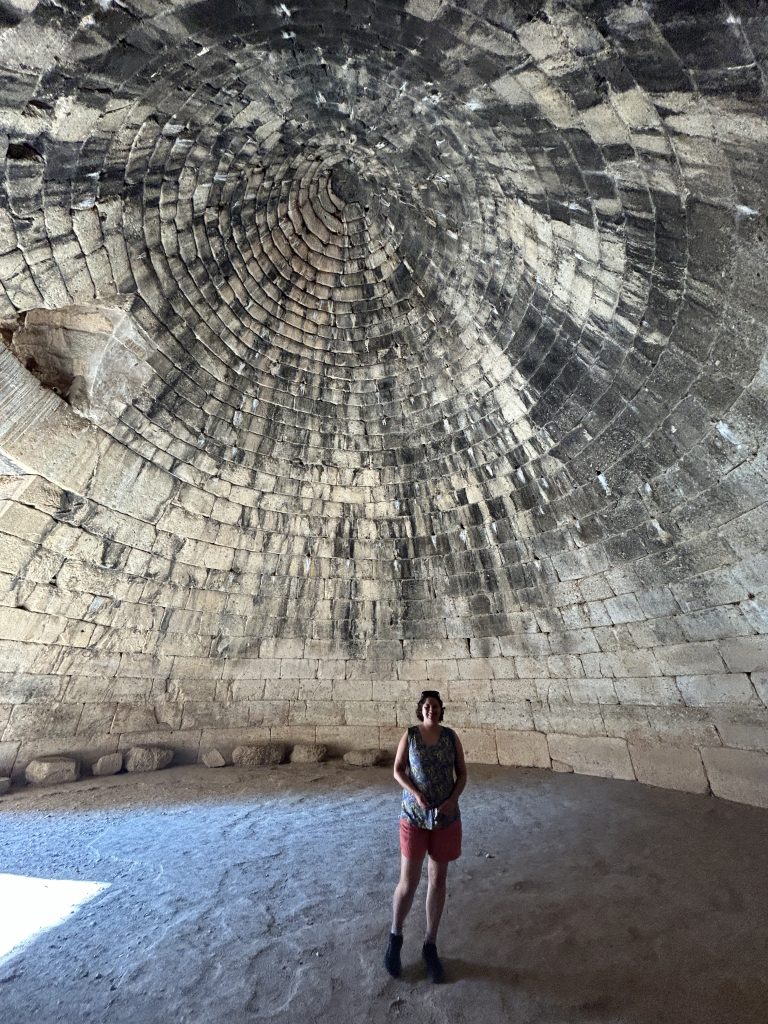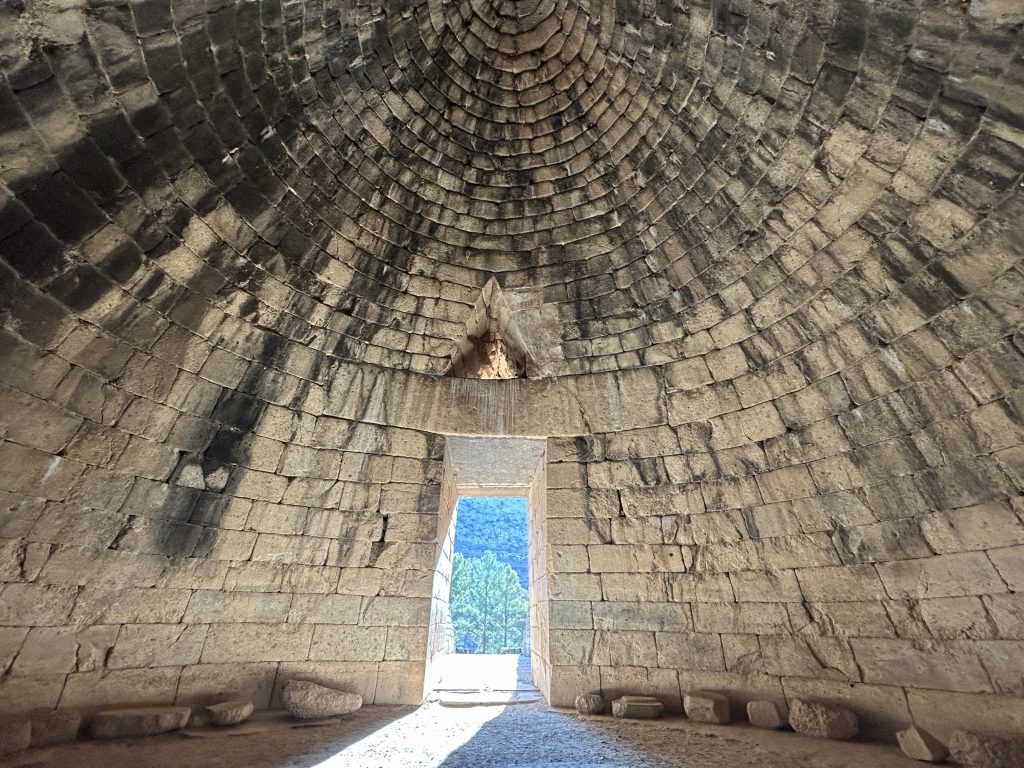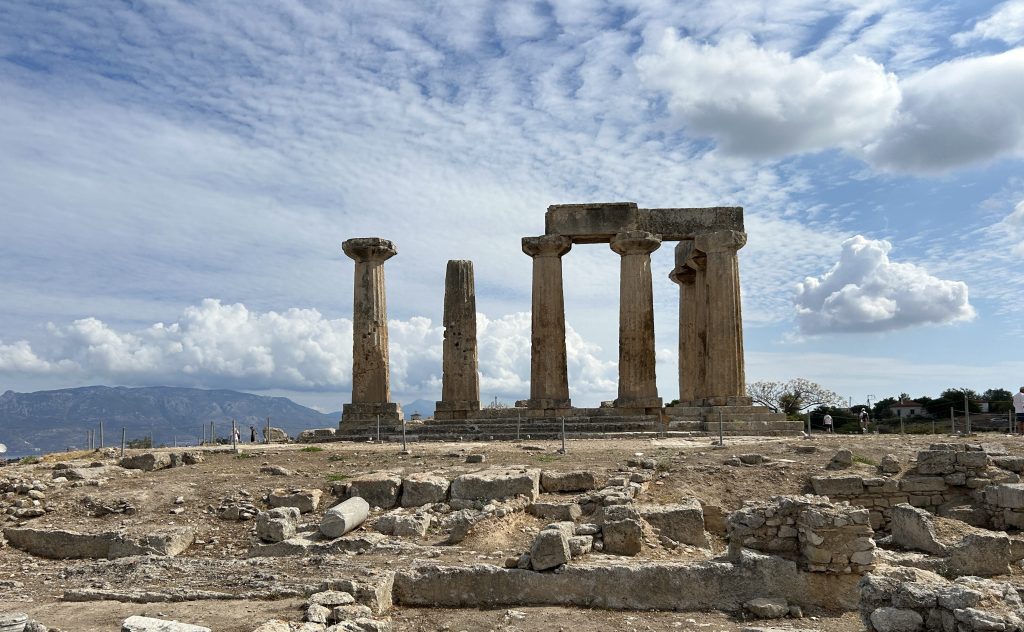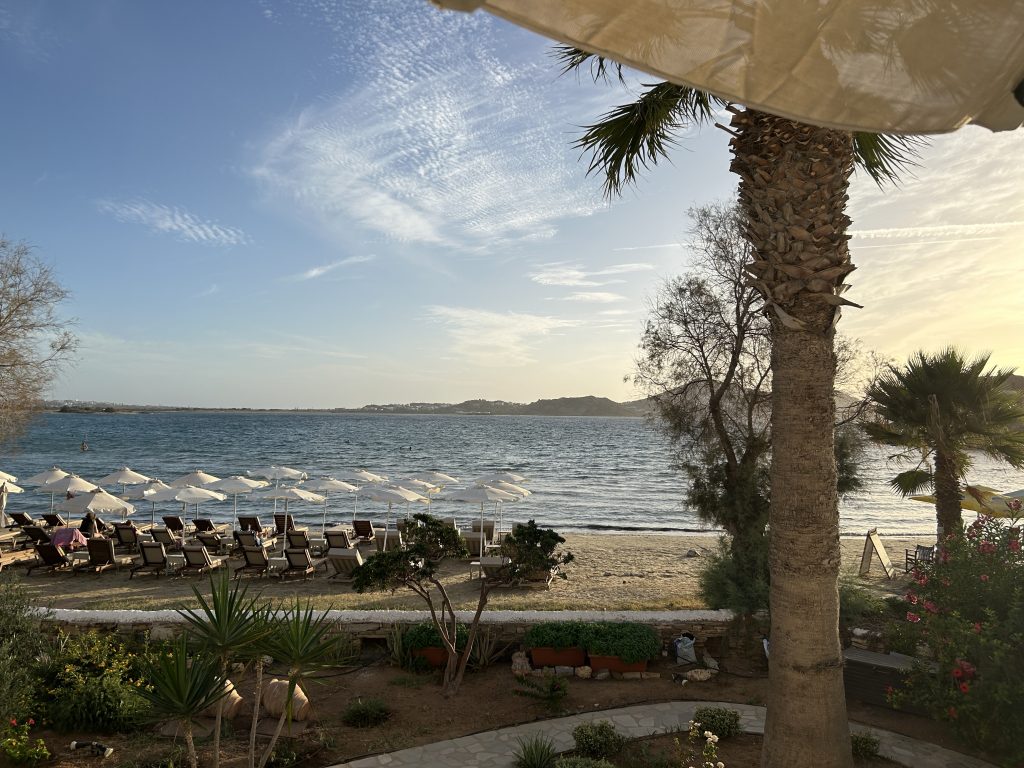Should You Make the Climb to the Acropolis of Athens?
Ah, the Acropolis of Athens! It is the pinnacle of Greek culture and a mecca for cultural travel. It’s both a graceful monument to the old gods and a tourist attraction famed for the number of visitors willing to risk heatstroke to see it in all its rubble-strewn glory.
Of all the many archaeological site scattered across Greece, the most famous by far are the imposing collection of temples perched atop the hill in the middle of the busy city of Athens.
The hill is called the Acropolis and the big temple in the middle is called the Parthenon, but people often use the two terms interchangeably.

Tours & Accommodations at a Glance
- Tour the Acropolis on a Small Group Tour
- Stay at the Hotel Lozenge
Overview of the Acropolis of Athens
A UNESCO World Heritage site, the Acropolis inspires millions of visitors every year to make the long trek from the ticket office to the temples, puffing up stone steps that go on forever (or at least feel like they do). There is no shade; for several months of the year, the sun can be life threatening; and you make the trek with thousands of fellow visitors.
Unless you’re visiting in the depths of winter, forget romantic thoughts of strolling up the steps in solitary communion with the ancient Greeks.
I’m actually surprised so many people visit the Acropolis. And yet they do. Thousands upon thousands of them visit every day—young and not so young, fit and definitely not fit, and from all over the world. The Acropolis is the must-see hit of Athens.
You can’t go to Athens and not climb to the Acropolis. Not to do so is probably illegal.
Read on for more about my experience and my recommendations for comfortably visiting the Acropolis and the must-see Acropolis Museum.
When It’s Too Hot to Visit the Acropolis
Officials sometimes close the Acropolis on summer afternoons when temperatures soar to the high forties Celsius. I can’t even imagine how hot that must feel. With no shade on the way up, such high temperatures plus bare rocks equal a searing experience.
If you’re visiting on a particularly hot and crowded day in the summer, I recommend just admiring the Acropolis from afar. Why risk heat stroke?
Instead, visit the wonderful (and air conditioned) Acropolis Museum and/or the National Archaeological Museum (check out my suggestions for touring!), enjoy a leisurely lunch, do some shopping, do some people-watching of the modern Athenians, and maybe take a peek at some of the lesser-known and much less crowded archaeological sites. You’ll still see the Acropolis from just about anywhere you walk in central Athens. Let that be enough.
Here are some tours from Tiqets.com that don’t include the Acropolis!
Visiting the Acropolis of Athens in the Late Afternoon
When the heat is manageable, consider visiting the Acropolis in the late afternoon. The crowds start to thin out, the temperature starts to cool, and sunset is imminent.
Here’s what I did during a visit with my daughter in mid-September.
My Visit to the Acropolis in September
We arrive at the ticket area near the main entrance to the Acropolis site at 4:30 pm to find that tickets for the 4:45 time slot are sold out, with the next available time slot being 5:45 pm.
If you go in the late afternoon, you may be lucky, like we are, and only wait an hour to get in. If, however, you are visiting at other times of the day or during the summer, buy your tickets online several days before your visit.
To Combo or Not to Combo?
Your big decision when buying your ticket to the Acropolis is whether you should buy a single or a combo ticket. The single ticket costs €20 and the combo ticket costs €30.
The single ticket only gets you into the Acropolis & Slopes within a 30-minute time frame from 15 minutes before to 15 minutes after your selected time slot.
The combo ticket gets you into the Acropolis & Slopes at your appointed time and into the Ancient Agora, Hadrian’s Library, Kerameikos, Aristotle’s School [Lyceum], Olympieion, and the Roman Agora anytime within five days of the ticket date. That’s a lotta ruins!
With only a day and a half in Athens, we decide to throw caution to the wind and buy the combo tickets. I figure that for the extra €10, we’re bound to visit at least one of the other sites. Most of them cost around €10, so we only have to visit one additional site to get our money’s worth.
We visit the Ancient Agora the day after our visit to the Acropolis, so for us, the combo ticket paid for itself, just. Here’s some advice on How to Spend a Perfect Artsy Traveler Day in Athens that includes a visit to the Ancient Agora.
Here’s the fabulous Temple of Hephaestus in the Agora.



I recommend you buy the combo ticket if you think you’ll have time to explore other sites. The Ancient Agora is definitely worth a visit.
Check the official ticket site.
Waiting to Enter the Acropolis
After buying combo tickets, we go in search of a café to have a drink while we wait. My daughter, Julia, chooses a donut that looks like it will be a tasty, if indulgent, treat.
Unfortunately, it’s drier than a vat of pixie dust. We should complain and get our €3.50 back. But I don’t have the heart since the server was so cheery when she seated us. We leave the donut virtually untouched and return to the ticket office.

NOTE: Avoid the string of cafés a few steps from the entrance to the Acropolis. There are many better places to eat in the nearby Plaka district.
Joining the Line to the Acropolis of Athens
We arrive back at the line at 5:30 and join the queue. There are quite a few people, but not so many that we feel overwhelmed. Precisely at 5:45, the turnstiles open and the line moves with surprising briskness.
Soon we’re through and ready to begin the long climb up to one of the world’s most iconic sites.
OMG! I’m at the Acropolis! Socrates walked here. Plato pontificated here. Thousands of believers made their way across these very slick stones to climb to the temples and worship the gods.
It’s one of those “pinch me” moments that make travel worthwhile.
Have you been to the Acropolis in Athens?
Oh yes. It was marvelous.
Fortunately, most people move quite slowly, what with stopping every two meters to snap pictures, so the climb feels less strenuous than it would be if the place were empty. Every few steps, we get to pause, admire the view, and catch our breath.
I listen to a Rick Steves audio commentary as I climb and learn all sorts of interesting things about what I’m seeing. I recommend Rick’s commentaries—they’re fun, informative, and not boring.
The Odeon of Herodes Atticus
On the way up to the Acropolis, we pass the Odeon of Herodes Atticus. It’s a superb open-air theater with seating for 5,000 spectators that is still used for performances. Built in 161 AD, the Odeon of Herodes Atticus has hosted stars such as Elton John, Pavarotti, Frank Sinatra, and Sting.

Slowly, slowly we climb up and up Acropolis hill until we face the monumental entrance to the Acropolis—enormous pillars soaring into the cloud-studded Athenian sky. I am suitably awed and snap away happily along with a few hundred of my fellow climbers.

What’s Up Top at the Acropolis of Athens?
When, finally, we make it to the top, all of Athens is laid at our feet which is pretty danged spectacular. We’re also standing in the shadow of the mighty Parthenon which, despite the scaffolding and the missing columns, is magnificent.
It’s the very definition of iconic.
People are everywhere, but it’s not difficult to crop them out of pictures, and everyone is in good spirits. After all, they’re in the midst of crossing a major experience off their bucket lists. Also, the temperature at around 28 C degrees with a nice breeze and the sun fast setting is just about perfect.

Warning: No Disrespecting Allowed
Resist the temptation to engage in any shenanigans while snapping pictures of the monuments of the Acropolis. Guards patrol the perimeter on the lookout for anyone daring to make light of Greece’s national treasures. They frown on people mugging for the camera with excessively silly poses or acting in any way disrespectfully.
Temple of Erechtheion at the Acropolis of Athens
The beautiful temple of Erechtheion with its columns made from the figures of women is a highlight of the Acropolis. The original statues are in the Acropolis Museum, which I talk about later in this post. The statues you’ve climbed up to see are reproductions.
But the temple is still wonderful! Who cares that most of it was rebuilt in modern times?

The Parthenon
The main activity at the top of the Acropolis is walking around the Parthenon and snapping pictures of the Parthenon along with the other temples and the view of Athens from every angle.
You can eavesdrop on tour groups or listen to an audio guide to learn more about the site, or you can just look and enjoy.
The attraction of the place is its hold over our collective imaginations. The Acropolis of Athens symbolizes much of what is good in western culture as defined by the ancient Greeks. Their contributions to medicine, theater, literature, language, architecture, sculpture, and a whole lot of other useful pursuits have lasted millennia.
The world owes a lot to the Greeks, and the Acropolis of Athens stands proud witness to that debt.
We circle the Parthenon, admiring its perfect dimensions and lamenting its sorry state of disrepair. Over the millennia, it was bombed by the Venetians, had a mosque built inside of it by the Ottomans, and had bits of it removed by a certain British lord whose name begins with E.
Many Greeks are not happy that their “Elgin” marbles were removed from the Acropolis back in the day and are still in the British Museum. I hope they get them back so they can be installed in the gorgeous new Acropolis Museum that we visit next.

Temple of Athena Nike
Athena, goddess of wisdom, crafting, and victory, is one of my favorite goddesses. Perched at the edge of a cliff, the temple dedicated to the goddess Athena is the smallest temple at the Acropolis. It was built in the Iconic order (my favorite of the three orders) in 420 BC.
Sunset Over Athens
The sun is starting to sink over Athens and the guards start ushering people towards the exit. Although the Acropolis is supposed to stay open until 8 PM, that’s not exactly the case. I suppose they want everyone off before darkness falls which, considering the roughness of some of the steps, is a good idea.

The journey back down the slopes of the Acropolis is much easier than the journey up. Before long, we’re back in front of the Acropolis Museum.
Because it’s a Friday, the museum is open until 10 PM. Visiting it after an early evening climb to the Acropolis makes a perfect ending to an Acropolis outing.
Accessing the Acropolis via Elevator
If you are not able to climb the many, many steps to the Acropolis, you may be able to use the elevator. Thank you to a commenter on this post for reminding me that an elevator is available.
Note that access is strictly controlled. You need to prove you are disabled, and should call ahead to check availability. The number is +30 210 3214172 or +30 210 9238470
The ride up takes just 32 seconds!
Visiting the Acropolis Museum
This museum is an Athens must-see. It’s brand new and gorgeous and is equally awesome whether visited before or after climbing to the Acropolis. And if the weather and crowds prevent you from making the climb, the Acropolis Museum is a fine consolation prize.

The three floors of the museum are large and airy with beautifully curated displays of artifacts from the Acropolis of Athens. In addition, informative videos, and lots of information in English, bring Greek history to life.
Allow at least two hours to tour the museum.
A highlight for me are the original statues from the Temple of Erechtheion. The details in the robes and hair of the women are astonishing.



On the top floor, you can see great views of the Acropolis. Since we are visiting in the evening, the floodlit ruins appear to float in the night sky.

Also on the top floor is the glass-encased “Parthenon Gallery” on which the relief sculptures of the Parthenon frieze are exhibited in continuous sequence around all four sides, mimicking the real Parthenon.
While most of the sculptures were long ago plundered by Lord Elgin, enough remain to give an idea of the splendor of the original building.



Plenty of information is provided to help visitors visualize the original friezes as well as understand the significance of the sculpted figures. It’s a pretty cool experience to walk around the four sides of the massive structure on the top floor, occasionally glancing out the window to see the real Parthenon rising into an indigo sky from the moonlit Acropolis.
On the ground floor, wide expanses of glass that you can walk over allow you to view the active archaeological dig below ground.

When to Visit the Acropolis Museum in Athens
I highly recommend visiting the Acropolis Museum in the evening, if possible. We pretty much had the place to ourselves for the entire visit. Earlier in the day, the museum can get very crowded because people often go to the Acropolis first and then visit the museum.
Here are some options for purchasing tickets to the Acropolis and the Acropolis Museum.
Where to Stay in Athens
On my recent trip to Athens, I stayed in two places–a holiday apartment for two nights and a hotel for one night. I can highly recommend both places.
Karma Athens: Located on a quiet street just around the corner from the lively Plaka district, Karma Apartments was the perfect place to stay in Athens. Our one-bedroom apartment included a private terrace that featured a peek-a-boo view of the Acropolis.
The building contains only holiday lets so it’s more like a hotel, but without a reception. However, there was an attendant there when we arrived early who kindly stored our luggage until the apartment was ready and then carried it up to our apartment on the top floor. The stairs were steep but the climb was worth it.
Hotel Lozenge: This business hotel located in the high-end Kolonaki area of Athens, and within easy walking distance of most of what you’d want to see in Athens, is clean and modern with a friendly staff and an attached bar-restaurant.
We stayed one night before flying home the next morning, and it was an excellent end-of-trip choice.
Conclusion
The Acropolis of Athens is a definite must-see if you can avoid risking heatstroke or standing in long lines for hours on end. Go late in the afternoon, if possible, scheduling your visit to the Acropolis Museum for when the museum is open late, and take your time.
It’s likely you’ll only make the climb up to the Acropolis once or twice in your life. Make sure the experience is one you look back on with fondness, remembering the thrill of treading in the footsteps of the ancients rather than the tedium of inching painfully across sun-baked stones.
Have you visited the Acropolis in Athens? Share your experience and recommendations in the Comments below.
Other posts about Greece:
- Stay in Oia for a Stunning Santorini Experience
- How to Spend Two Laid-Back, Glorious Days on the Greek Island of Naxos
- Nine Great Reasons To Visit Meteora in Greece
- How to Spend a Perfect Artsy Traveler Day in Athens
- Explore Greek Cuisine in a Savor Nafplio Cooking Class
- How To Spend Two Wonderful Days in Charming Nafplio in Greece












































